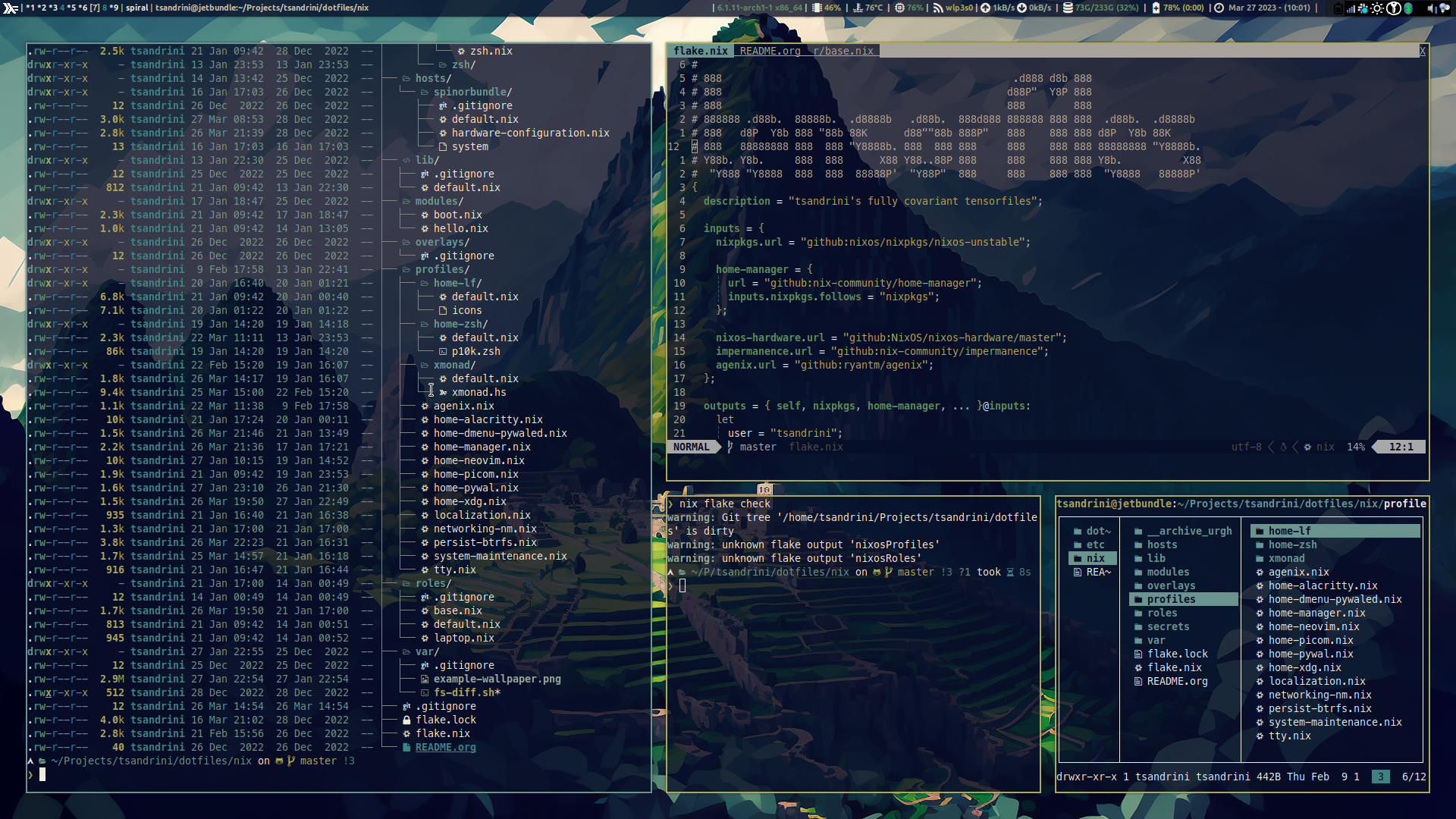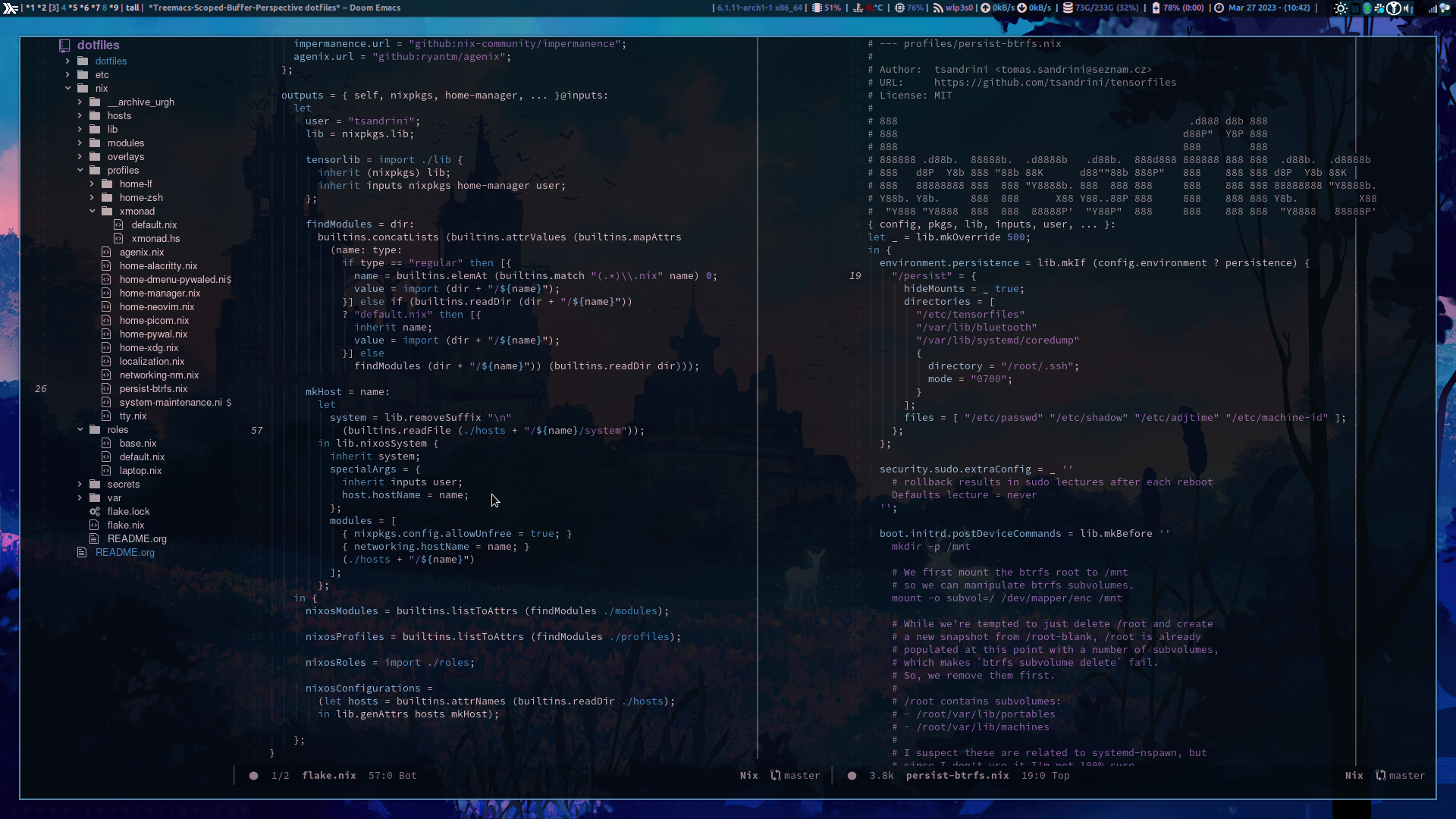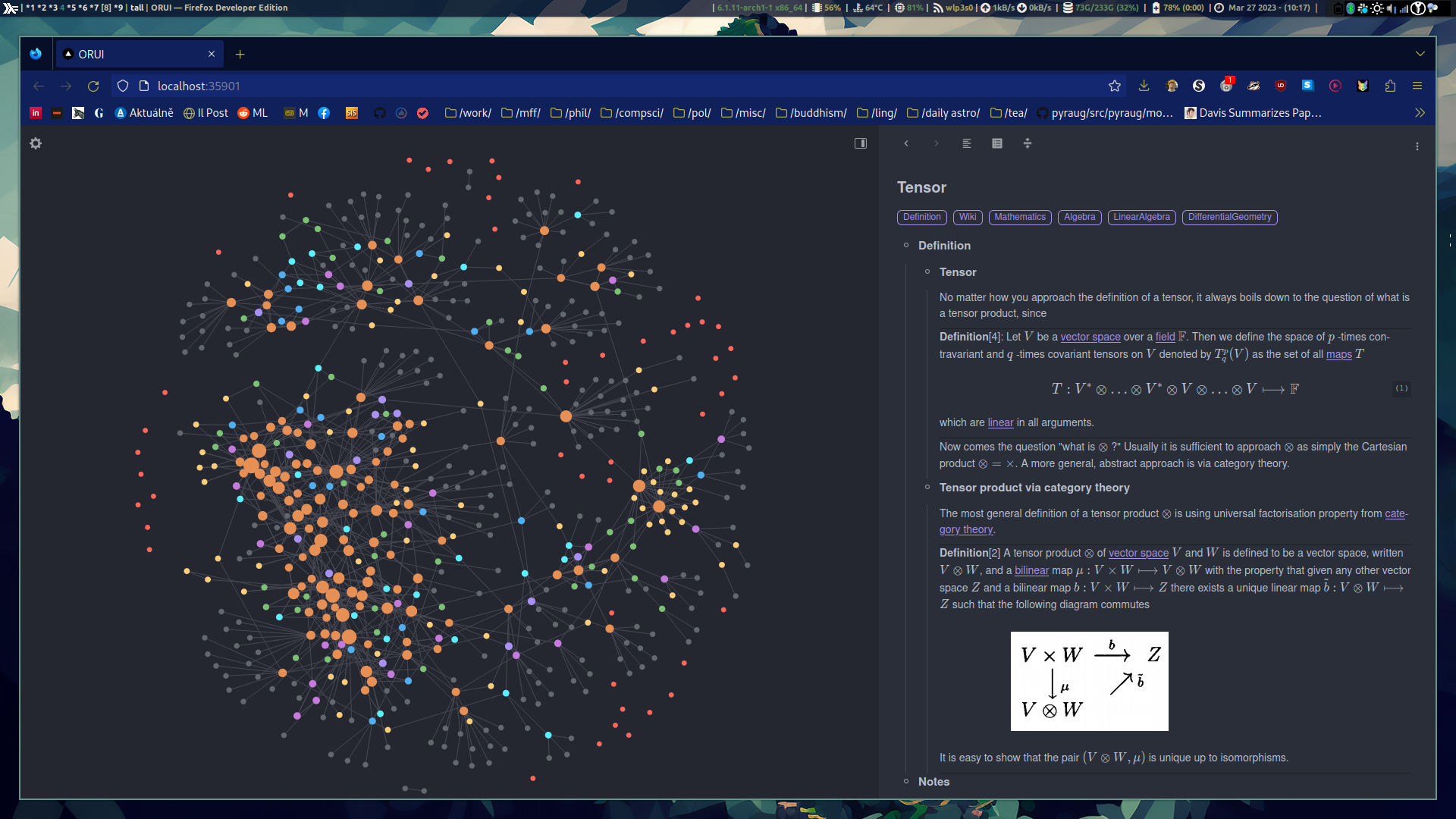Index
tensorfiles#
Table of Contents#
- About
- Software
- Academics
- Secrets
- Installation
- (rough) Roadmap
- Troubleshooting
Write error: disk full;duringnixos-install- References
1. About#
tensorfiles represent a set of fully covariant, that is invariant to the chosen coordinate system (they work on every machine), fundamental laws of computing (how to build my fancy flashy terminals)


For more info refer to the documentation. The project is also hosted at on FlakeHub.
2. Software#
I use the following software
TODO rewrite into a list, tables are super unreadable in code
2.1. Academics#
TODO comment more?
- org-roam: This is the heart of everything that I do, TODOs, daily journals, scratchpads, notetaking and personal research wiki. The internal wiki is interlinked with zotero entries as well as anki cards.
- TODOs: org-agenda
- visualization: org-roam-ui
- anki connection: org-anki-editor

- zotero: This is my backend for all of my
bibliography as well as the individual
.pdffiles. As of now I keep them up to date between machines using syncthing, but I’ll probably set up a personal cloud when I’ll have spare time. - anki: Since I have the memory of worm I try to keep my long-term memory of different subjects fresh using flashcards. I sync the cards using ankis official cloud.
2.2. Secrets#
For my day to day passwords I use a locally synced keepassxc encrypted database and for the NixOS based secrets I use agenix. I also try to avoid using any globally available pubkeys and rather tend to use machine specific ones instead (for obvious reasons).
Note: plz no pwn xd, if you see any vulnerabilities please DM me instead, thanks <3.
3. Installation#
TODO
4. (rough) Roadmap#
- [-] **organization**
- [ ] finish doc
- [x] decouple
- [x] decouple
- [x] move nix/ to be the project root
- [-] **implementation**
- [ ] syncthing (local version)
- [ ] syncthing (remote)
- [ ] searx (remote)
- [x] newsboat
- [ ] thunderbird
- [ ] zotero
- [ ] anki
- [ ] emacs
- [ ] discord
- [ ] misc? vlc? libre?
- [ ] **machines**
- [ ] jetbundle
- [ ] pi
- [ ] server
5. Troubleshooting#
Write error: disk full; during nixos-install#
If you get any error of this kind during the installation of this flake
you have most likely run out of $TMPDIR space. This is usually due
to $TMPDIR being set up as a RAM based tmpfs and thus not having enough
RAM for nix store cache during installation.
The most clean & general solution to this would be to create a minimal
based installation and then run a nixos-rebuild (and I still might do that)
but that kind of defeats the purpose of what I am aiming for which would be
to run nixos-install, a single command, and end up with a fully prepared
system.
Considering that a quick workaround is to navigate $TMPDIR to a different
folder (this might slow the installation process if you redirect it to a
spinning disk tmp filesystem, however, assuming you have a decent bandwidth
is’s still just by minutes)
A different solution in case you have more spare RAM would be to remount tmpfs, for example
6. References#
The whole nix ecosystem is in its foundations a revolutionary piece of software and once you get the hang of it you feel like you’ve really conquered the art of computer wizardry, however, it’s so different from everything that is the current status quo of compsci and thus needs appropriate extensive documentation/tutorials/etc… which is, however, currently not the case.
Due to this exact reason I’m leaving here a list of resources/flakes that helped me to (somewhat) learn the ways of nix (TODO: maybe write more? manual.org?)
- Nix Pills: obligatory pills
- NixOS search: this should be your homepage really
- Home-Manager opts search: the same search but for home-manager, secondary homepage tbh
- hlissner/dotfiles: great resource for learning how to appropriately modularize code
- notusknot/dotfiles-nix: a more straightforward config but with all the needed parts, great introduction to flakes, home-manager
- Nix Cookbook: custom scripts, package wrapper scripts
- balsoft/nixos-config: more modularized but not overly complicated config
- A really nice blogpost/tutorial on encrypted nixos opt-in system using btrfs
- Github code search: thanks to how the nix lang works the code search should be of a huge help, included an example